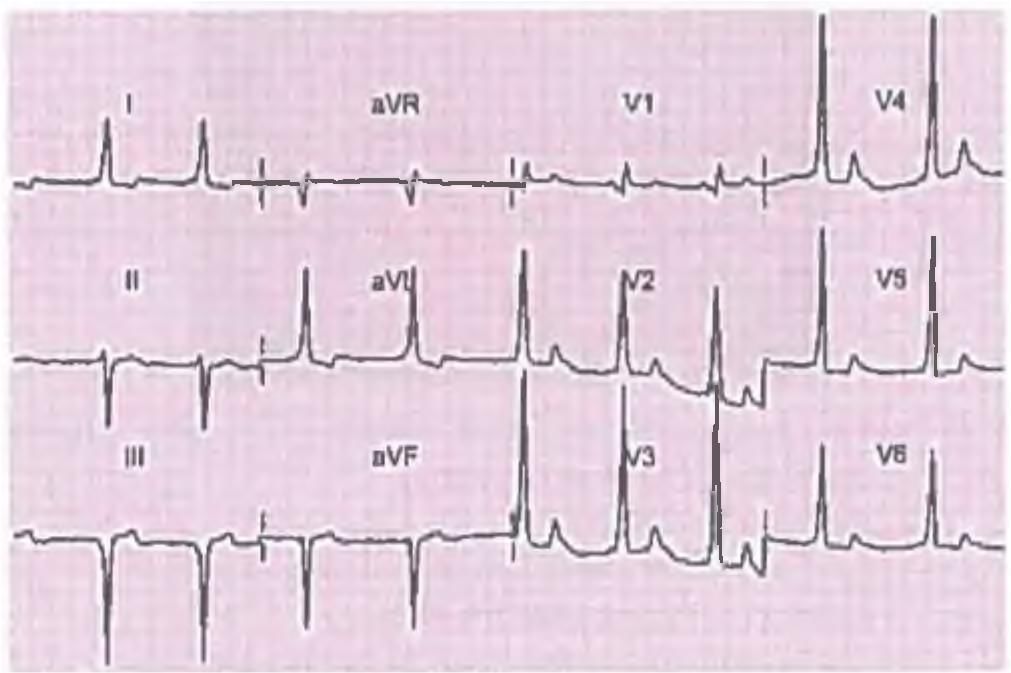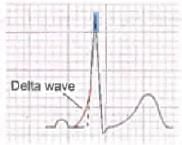NEET PG Exam > NEET PG Tests > Test: WPW and Brugada Syndrome & JVP - NEET PG MCQ
Test: WPW and Brugada Syndrome & JVP - NEET PG MCQ
Test Description
10 Questions MCQ Test - Test: WPW and Brugada Syndrome & JVP
Test: WPW and Brugada Syndrome & JVP for NEET PG 2025 is part of NEET PG preparation. The Test: WPW and Brugada Syndrome & JVP questions and answers have been prepared
according to the NEET PG exam syllabus.The Test: WPW and Brugada Syndrome & JVP MCQs are made for NEET PG 2025 Exam.
Find important definitions, questions, notes, meanings, examples, exercises, MCQs and online tests for Test: WPW and Brugada Syndrome & JVP below.
Solutions of Test: WPW and Brugada Syndrome & JVP questions in English are available as part of our course for NEET PG & Test: WPW and Brugada Syndrome & JVP solutions in
Hindi for NEET PG course.
Download more important topics, notes, lectures and mock test series for NEET PG Exam by signing up for free. Attempt Test: WPW and Brugada Syndrome & JVP | 10 questions in 10 minutes | Mock test for NEET PG preparation | Free important questions MCQ to study for NEET PG Exam | Download free PDF with solutions
Test: WPW and Brugada Syndrome & JVP - Question 1
Digoxin is not used in the management of? (Recent Question 2016-17)
Detailed Solution for Test: WPW and Brugada Syndrome & JVP - Question 1
Test: WPW and Brugada Syndrome & JVP - Question 2
A 16-year old boy has history of recurrent episodes of fainting in-school assembly. ECG was done. What is incorrect about the condition?


Detailed Solution for Test: WPW and Brugada Syndrome & JVP - Question 2
Test: WPW and Brugada Syndrome & JVP - Question 3
An 18-year-old boy is asymptomatic. On ECG he has a short PR interval with delta waves. Which of the following is not required for these patients? (AIIMS May 2013)
Detailed Solution for Test: WPW and Brugada Syndrome & JVP - Question 3
Test: WPW and Brugada Syndrome & JVP - Question 4
What is incorrect about Brugada syndrome? (Recent Pattern 2014-15)
Detailed Solution for Test: WPW and Brugada Syndrome & JVP - Question 4
Test: WPW and Brugada Syndrome & JVP - Question 5
Brugada Syndrome is associated with: (AIIMS 2013)
Detailed Solution for Test: WPW and Brugada Syndrome & JVP - Question 5
Detailed Solution for Test: WPW and Brugada Syndrome & JVP - Question 6
Test: WPW and Brugada Syndrome & JVP - Question 7
In a patient of lung cancer with full neck veins and low BP, which of the following is incorrect? (Recent Pattern Questions)
Detailed Solution for Test: WPW and Brugada Syndrome & JVP - Question 7
Test: WPW and Brugada Syndrome & JVP - Question 8
Internal jugular vein pressure determines pressure of: (Recent Question 2015-16)
Detailed Solution for Test: WPW and Brugada Syndrome & JVP - Question 8
Detailed Solution for Test: WPW and Brugada Syndrome & JVP - Question 9
Test: WPW and Brugada Syndrome & JVP - Question 10
A wave in JVP is absent in: (Recent Question 2015-16)
Detailed Solution for Test: WPW and Brugada Syndrome & JVP - Question 10
Information about Test: WPW and Brugada Syndrome & JVP Page
In this test you can find the Exam questions for Test: WPW and Brugada Syndrome & JVP solved & explained in the simplest way possible.
Besides giving Questions and answers for Test: WPW and Brugada Syndrome & JVP, EduRev gives you an ample number of Online tests for practice
Download as PDF















